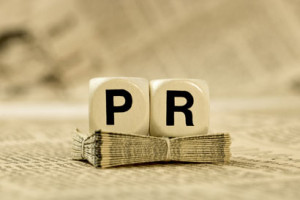5 Tips For Mastering Your Next Media Pitch
“You’re different from most PR people I talk to. That’s a good thing.”
Those words came from a writer at the Associated Press. She was interviewing me for a story about how small businesses can market themselves. I was already totally flattered to be chatting with this writer in the first place…that compliment put me over the moon.
But as I eagerly await the release of the story, I felt inclined to share some of my favorite tips for making media pitches stand out. I incorporate each one of them into every single email.
Tip #1: Create a good subject line
Your subject line should clearly communicate what your email is about. Journalists appreciate straightforward messages (more on this below.) Keep in mind that emails are often being viewed on mobile phones, so crafting shorter subject lines that can be read in their entirety is in your best interest.
Tip #2: Get straight to the point
Journalists receive hundreds of emails daily. They are very busy people. So the competition to get yours read (especially past the first sentence) is tough. Combat that challenge by getting your point across as quickly as possible. Make sure every sentence is easy to read, grammatically correct, and free of fluff. And always make sure to personally proof your pitch. Spell check doesn’t know the difference between to, two, and too, but a journalist does.
Tip #3: Check that you’re pitching the right person
Crafting media lists is probably my least favorite part of the job because it’s so tedious. However, I can’t emphasize enough how important it is to invest time in making sure you’re emailing the right person. Don’t assume your pitch will be forwarded to the correct contact.
Tip #4: Demonstrate you know the writer’s beat
A journalist’s “beat” is their area of specialty. Doing a quick google search can go a long way. Read some recent stories by the writer you’re pitching, or see what they’re tweeting about. If the opportunity arises to organically weave something they’ve recently covered into your pitch, go for it. Just make sure you’re not adding significant length to your email by doing so.
Tip #5: Make sure a call to action is easy to find
Journalists have a ton on their plates. Don’t make it harder by having them go searching for your company’s website or phone number. I recommend hyperlinking the first mention of your company name to your website. Then include the actual URL closer to the bottom of your pitch.
But before you even begin any of this, it’s important to know whether your pitch is actually newsworthy. I realize that being unbiased in these situations can be super difficult though, so if you’re unsure just give me a hoot. I’d be happy to share an opinion.
Pitch wisely.
Robyn Lanci
WHY OUTSOURCING YOUR PUBLIC RELATIONS IS A GOOD IDEA
Recently a public relations vendor posted an article on its Facebook page about why outsourcing your PR might not be a clever idea. I’m sure I wasn’t the only PR person out there who was annoyed that a PR vendor was advocating not working with an agency, but it also left me wondering who is in charge of the company’s social media.
WHY PRESS RELEASES ARE VITAL FOR YOUR PR TOOLBOX
In a time when social media has taken over by way of 140 character snippets, I’ve heard a lot of discrepancy about the value of a press release. If you think it’s too old school, think again..but don’t take my word for it. Take it straight from the source: a travel editor with whom I’ve had the pleasure of working with for years. She uses press releases all the time. And she’s not the only one.
HOW NOT TO LOSE A POTENTIAL CUSTOMER
HOW NOT TO LOSE A POTENTIAL CUSTOMER I was recently intrigued by a corporate email marketing campaign for Valentine’s Day. The message read: Roses are red, violets are blue Valentine’s Day is coming, so what will you do? In the U.S. and Canada hotels have good deals...
Get a free public relations & marketing consultation.

Copyright 2019 Owl PR



